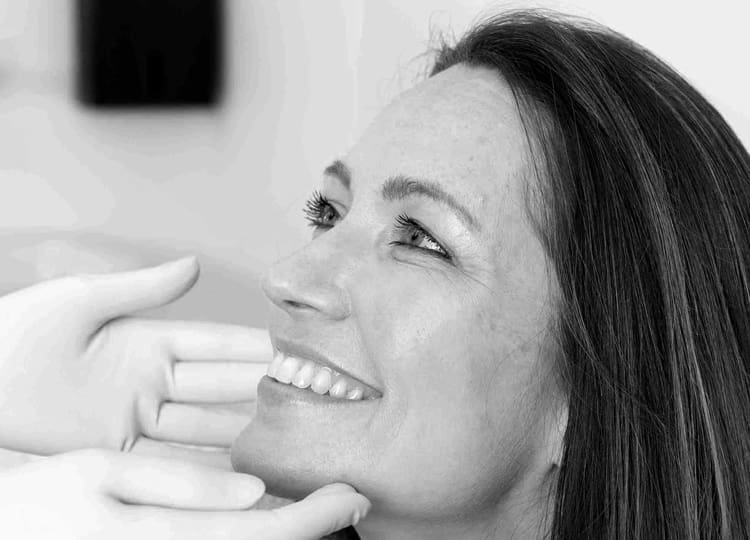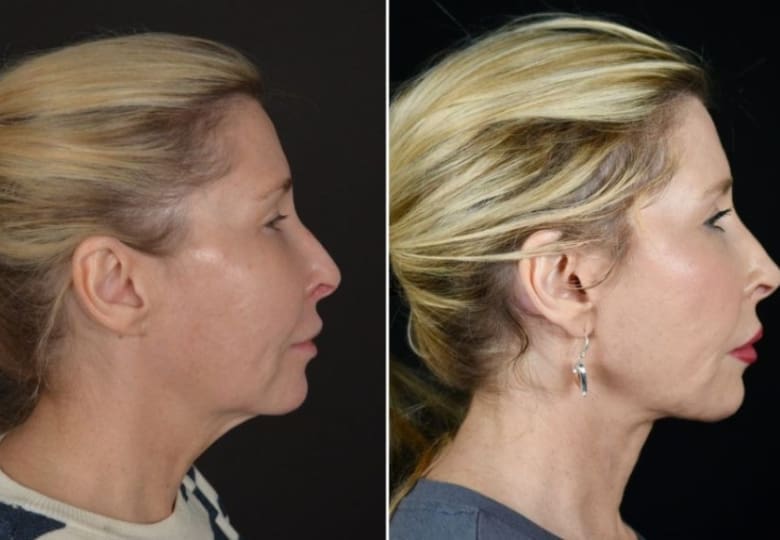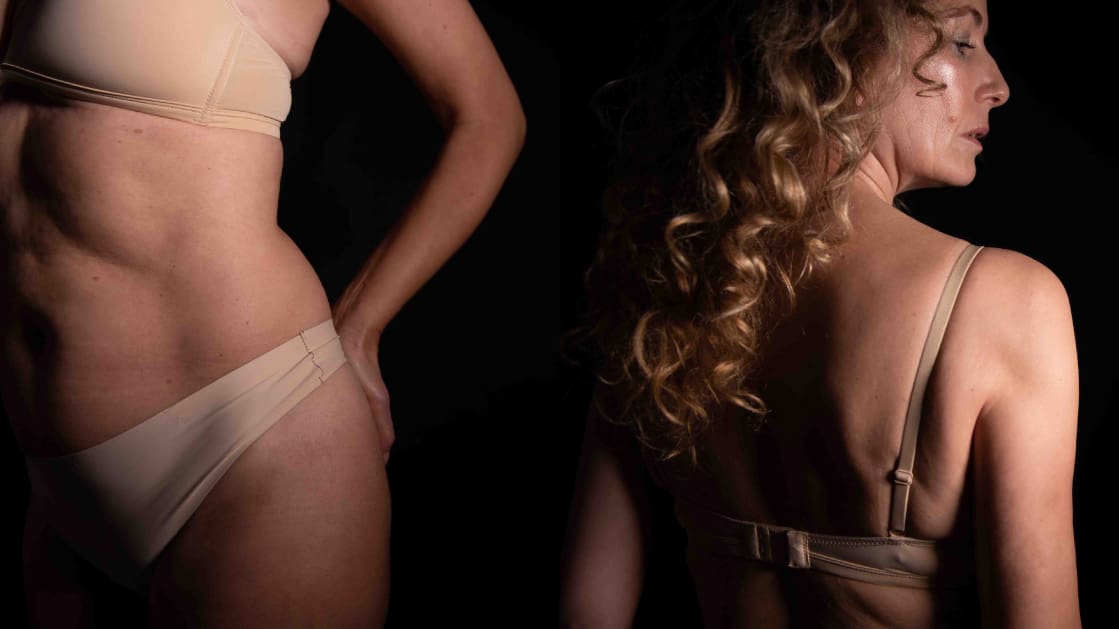McKeown Medical
167 Bath Street, Glasgow, G2 4SQ
Date posted — 8.04.25

In today’s world, trends have shifted dramatically when it comes to aesthetic treatments. Gone are the days when a facelift meant a ‘tight’ look that gave away a patient’s age or history of cosmetic work. Modern approaches emphasize subtlety and natural enhancement. At McKeown Medical, we understand that our patients desire undetectable results—enhancements so refined that only you know you’ve had treatment. This article explores how facelifts have evolved, what to look for in both quality and less desirable outcomes and how our clinic is at the forefront of achieving naturally beautiful results.
The allure of undetectable surgery is fuelled by the modern desire for authenticity. Our patients are typically successful women who feel confident in their own identity and who do not want to be defined by their looks. They want to look great and feel great for themselves – but they do not want others looking at them and judging them for having cosmetic surgery. Many are hesitant to undergo traditional facelifts due to the risk of obvious changes that can signal cosmetic intervention. Instead, a growing number are turning to what is often referred to as ‘invisible’ or ‘natural’ facelifts. These treatments focus on enhancing your natural features rather than drastically altering them.
At McKeown Medical, we believe in the art of natural aesthetics. Our approach is to use the most sophisticated and modern techniques – known as the deep plane facelift technique – to reposition the face back without any signs of tension. The deep plane facelift technique is the most technically challenging to perform, and we are the only clinic in Scotland that performs this. But, we have invested the resources to develop this procedure in our practice because we know it is the key to giving our patients the results they want – natural, effective rejuvenation without the tell-tale signs of surgery.
A facelift, medically known as rhytidectomy, is a surgical procedure designed to reduce signs of ageing by repositioning sagging facial tissues and smoothing wrinkles. The procedure typically involves the repositioning of the skin and deeper structures of the face to create a rejuvenated, more youthful appearance. However, it’s important to understand that there are many different types of facelifts – and not all of them were created equally.
Types of Facelift Treatments
There are many different types of facelifts available, and each surgeon will have their own specific technique that they prefer with their own individual variations. However, the types of facelifts can be grouped broadly into three groups:
Mini-facelift
The mini-facelift involves making incisions around the ears and then separating the skin from the deeper tissue layer of the face, known as the SMAS (subcutaneous musculoaponeurotic system). To tighten the deeper tissues of the face, the mini-facelift usually relies on a few stitches placed into the SMAS. The biggest benefit of the mini-facelift is the rapid recovery, however, the results can be quite underwhelming and short lived. The scars from a mini-lift also tend to stretch over time to become more visible because the technique relies on tension in the skin.
The standard SMAS facelift
This technique also separates the skin from the underlying SMAS. However, the SMAS is then elevated as a separate layer and pulled backwards, giving a more effective pull on the deeper tissues of the face. This is the most common type of facelift performed worldwide.
The deep plane facelift technique is similar to the SMAS facelift, except it goes much deeper below the SMAS to release the retaining ligaments of the face. The retaining ligaments are small fibrous bands of tissue that go from either the muscle or the bone to the skin, anchoring the skin in place. By releasing these ligaments, the surgeon can then reposition the entire face back the way – rather than relying on tension on the deeper tissues. The result is a much more natural and effective lift, although it takes a great deal of surgical skill for a surgeon to be able to go deeper into the face and release these ligaments. That’s why the majority of surgeons still perform a standard SMAS facelift.
A full facelift is the most extensive option, which combines a deep plane face and neck lift procedure with other procedures like eyelid surgery or a brow lift for a more comprehensive rejuvenation of the entire face.
You can explore our full range of facelift treatments here.
Unfortunately, not every facelift leads to the natural, refreshed look that patients desire. A ‘bad’ facelift can result from outdated techniques or poorly executed procedures. Recognising the signs of a less-than-optimal facelift is crucial when you’re making your treatment decisions.
Common Pitfalls of Poor Facelift Techniques
Overcorrection
One of the most common issues is overcorrection, where the lift appears too tight or ‘pulled’. This is usually because a surgeon has performed a standard facelift technique but applied too much tension to the SMAS. Surgeons sometimes do this in an effort to give their patients more tightening, but there is only so much that can be achieved with this technique, and it’s important to recognise this limitation. Trying to push it too far, whilst well-intentioned, results in an unnatural outcome.
Visible Scarring
While modern techniques have significantly reduced scarring, visible or poorly concealed incisions can be a telltale sign of a bad facelift.
Loss of Natural Expression
A natural facelift enhances your features while preserving your unique expressions. When the procedure compromises your facial dynamics, it can lead to a ‘mask-like’ appearance.
By understanding these pitfalls, you can better appreciate the importance of choosing an experienced, skilled surgeon who values natural results and has the technical skills to deliver the result you want. At McKeown Medical, we pride ourselves on investing in developing the most advanced surgical techniques to deliver the best possible results and ensure that your enhancement is as subtle as it is effective.
Selecting the appropriate facelift treatment requires an honest conversation about your expectations, your facial anatomy, and the realistic outcomes of procedures. While the promise of a ‘new you’ can be enticing, the goal should be to enhance your natural beauty rather than reinvent your appearance completely.
The Importance of Realistic Expectations
It’s essential to set realistic expectations for any cosmetic procedure. No surgery can stop the ageing process, but a well-executed facelift can significantly enhance your natural features and help you look as refreshed as you feel. At McKeown Medical, we take the time to understand your personal goals and provide expert advice on which treatment option will best suit your needs. Our consultations are designed to educate you about all available options – including non-surgical alternatives – ensuring that you make an informed decision.
Customized Treatment Plans
Every patient is unique, and so is every face. This is why our approach is entirely personalized. We consider factors such as skin type, skin quality, history of sun damage, nicotine consumption, and individual aesthetic goals before recommending a treatment. Whether you’re interested in a non-surgical facelift or a full surgical intervention, we’re here to guide you through the process. To learn more about the specific treatments we offer, visit our detailed pages on the non-surgical facelift and deep plane face & neck lift.
Expertise Makes the Difference
The quality of a facelift is highly dependent on the surgeon’s skill and experience. With decades of combined expertise, the McKeown Medical team is committed to delivering natural-looking, undetectable results. Our clinic leverages state-of-the-art techniques, the most sophisticated laser technologies and a team of experts with their own niche specialist interests to collaborate and produce the best treatment plan for each individual patient – one that delivers results that are both aesthetically pleasing and subtly refined.
The modern facelift is not about dramatic changes or turning back the clock in an obvious way—it’s about subtlety, balance, and enhancing your natural features. With the right treatment, you can enjoy a youthful appearance that still feels like you. Trust in the expertise of McKeown Medical to guide you through this transformative journey with care, precision, and a commitment to natural results.
Take a look at our facelift gallery to see plenty of examples of our work here.

An example of a patient who underwent a deep plane face and neck lift with a deep neck reduction.
1 / 3
2 / 3
3 / 3
I honestly cannot recommend highly enough. The staff are highly attentive and super friendly. The comfortable feeling I felt from the moment I walked through the door continued all the way through to the treatment room where Dr Darren and his nurse listened exactly to what I was trying to achieve. A wonderful experience in lush surroundings.
Audrey SandersMarch 2024

Another year, another round of incredible transformations from our team at McKeown Medical!
Eye bags banished, jowls lifted, skin refined, veins gone. Thank you so much to all of our patients who have allowed us to share their photos with you and thank you to our incredible team who work so hard to take care of every patient who trusts us with their care.
Here’s to 2026 and another year of incredible transformations!

“But Daddies, WHEN is Santa coming? I want to wait up for him!”
Happy Christmas to all, and to all a good night 🎅🏻

Laser rejuvenation of the eye area can be an incredibly powerful tool for the right patients, especially those whose ‘bags’ are more about loose skin and fine lines, like this lovely patient here.
We treated her with full field ablation, which takes around 2 weeks to recover from. Her she is a few weeks later and you can see how much tighter the skin is, the crepey skin has gone and the fine lines have been ironed out. The patient is over the moon.
What do you think?

Eyelid surgery is one of the most popular procedures we do in the clinic. It’s a great fix for hooded eyes! Excess skin on the upper eyelids can not only create a hooded, heavy appearance but often affects the vision too.
Here’s the very talented @bramhallplasticsurgery discussing how upper eyelid surgery (blepharoplasty) can restore a more open, refreshed look by removing the excess skin and subtly redefining the natural eyelid crease. Scars are hidden within the fold of the eyelid, leaving eyes that look brighter, not “done.”
Do you have any questions about surgery? Ask in the comments or send us a message!

Thank you to our patient for allowing us to share her before and after photos of her upper blepharoplasty.
Excess skin on the upper eyelids can make the eyes appear tired or heavy. This simple procedure restores a lighter, more open look while keeping the result completely natural.
Another fabulous result from the very talented @bramhallplasticsurgery!
What do you think?

We’ve been in our new home for a year now and I thought this would be a good time to remind you just how special it is with a little video tour.
It’s been a remarkable year for us in our new home; we’ve introduced new doctors, new treatments, new services and our team continues to grow from strength to strength - always striving to provide more and better for our wonderful patients.
Enjoy the tour!

About last night… It was time once again for our annual Christmas celebration with this absolute bunch of legends. We were a little earlier than usual this year so we could have has many people available as possible, and the evening did not disappoint.
A few sore heads this morning, but absolutely worth it to celebrate the hard work this team dedicate to our patients day in, day out all year round. I am very proud to have the undisputed best team on the planet. Merry Christmas everyone! 🎄

Fine lines etched into the skin around the mouth - this is a common problem and in this patient`s case she had what we call ‘actinic elastosis’, whereby abnormal bands of elastin build up in the skin as a result of years of previous sun exposure.
When patients have this condition, the gold standard way of dealing with it is fully ablative laser resurfacing. It’s an intense treatment with two weeks of downtime afterwards, but the results are spectacular - just like in this lovely patient.
The after photo is three weeks after the treatment and you can see that the skin is still a little pink, which will continue to fade over the next few months.
The patient is already delighted with the result - what do you think?

It’s beginning to look a lot like Christmas!
At least according to Michael Buble, who’s been on repeat in the clinic this week. The decorations are up and we are officially in ‘our season’. The clinic has been packed with everyone having their skin polished in time to make it on the nice list. If you’ve still to make a pre-Christmas appointment, we’ve still got some spaces left for your festive glow up.
Ho ho ho everyone… It’s time for Santa!!!! 🎅🏻
